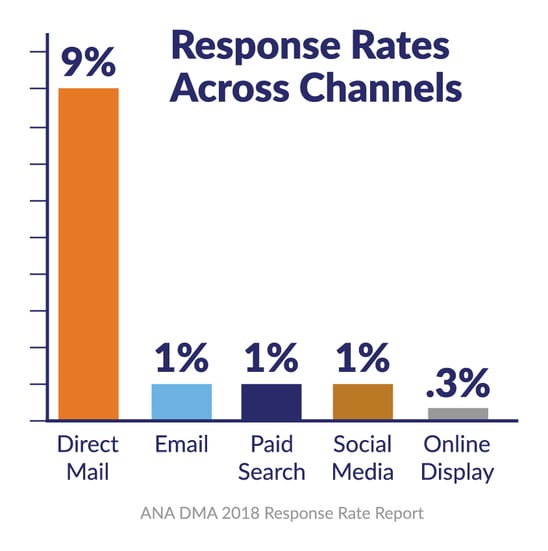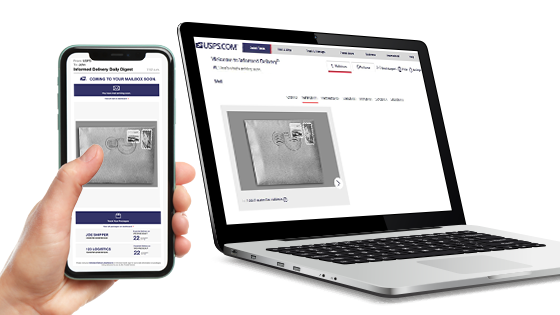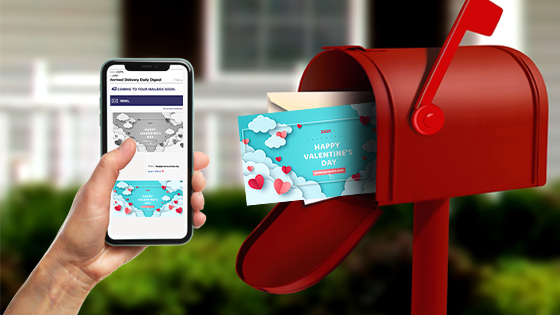In the game of golf, knowing when and how to use the right club is critical to your game. The course, conditions and placement of the ball should dictate if a wood, iron, hybrid, wedge or putter should be used.
Just like golfers, marketers need to know when and how to use the right channel to achieve peak performance.
Which is why the answer to the question “Which is more effective?” doesn’t have a black and white answer.
Rather, both direct mail and email should be viewed as equally important parts of your marketing ecosystem. Each channel has its own strengths and weaknesses, so knowing when to use direct mail and when to use email is key to a high-performance marketing campaign.
Unlike golf, there are times when using both channels is most effective. For important announcements–such as a product launch or policy change–you want to ensure your message is heard, so sending both a direct mail piece and email is ideal in this scenario. In fact, sending a follow-up email one week after a direct mail piece is delivered can increase response rates by 63%.
So, how do you know when to use direct mail versus when to use email, and when to use both?
Keep reading for everything you need to know about implementing a hole-in-one integrated marketing strategy using direct mail and email, including:
- Direct Mail vs. Email: Strengths and Weaknesses
- Best Practices for Using Direct Mail and Email Marketing
- Examples of Integrated Marketing Strategies with Direct Mail
Direct Mail vs. Email: Strengths and Weaknesses
Response Rates
When it comes to response rates, direct mail is the reigning champion. With open rates averaging 80 to 90%, direct mail campaigns produce an average response rate of 4.4%. Given that email open rates hover around an average of 20%, the response rates for email are lower and average around 0.12%.
 The high open rates and response rates of direct mail are due to several reasons, including:
The high open rates and response rates of direct mail are due to several reasons, including:
- Mailboxes aren’t as inundated as inboxes.
- 70% of people believe direct mail is less intrusive and more personal than digital channels.
- People are becoming immune to online advertising and skim past the hundreds of eblasts they receive each day.
Speed
When it comes to speed, email is the winner, but it doesn’t always mean it's seen. Leverage the speed of email and the high open rate of direct mail to ensure your message is seen. For example, if you have an urgent or time-sensitive campaign, send an email out as quickly as possible, then follow up with a letter or postcard communicating the information in more detail.
Cost
Email marketing campaigns are low or no-cost for most businesses, making it ideal from a budget standpoint. However, if open rates or click-through rates are underwhelming, it’s easy to boost conversions by segmenting your email list and sending a direct mail follow-up to people that didn’t open or click the email.
Brand Awareness
If you’re looking to build brand awareness or enter a new market, direct mail is considered more trustworthy and authentic than email, and the mailbox is far less flooded than the inbox, so direct mail is the way to go.
For example, Verizon partnered with Motorola in an effort to build brand awareness by sending a direct mail piece with a QR code to recipients. The QR code directed them to a landing page where they could enter to win a pair of Super Bowl tickets after watching a short video, highlighting the services of both businesses. Bonus: The first-party data collected from the landing page allowed marketers to personalize future communications with customers.
The key takeaway here is to avoid looking at the two channels from an “either-or” perspective. Instead, they should be viewed as two effective channels that can amplify the performance of the other.
Here’s how to amplify the effectiveness of both channels.
Best Practices for Direct Mail and Email Marketing
Ensure Consistent Branding
Consistent branding is critical to any integrated marketing strategy. For instance, if you send a beautifully designed direct mail piece with hyper-targeted content and the recipient scans the QR code only to land on a messy landing page with different branding, audiences will be confused or feel your business is untrustworthy. If your brand guidelines don’t have clear rules and parameters set for digital and physical branding, now is the time to put those in place. If they do, be sure to audit your brand guidelines regularly to ensure it doesn’t stray too far from the original standards and that everything is cohesive.
>>>Related Resource: How franchises maintain consistent branding across locations.
Track and Monitor Performance
Tracking the ROI of direct mail campaigns used to be a challenge, but QR codes solved for that by providing real-time performance insights such as the number of times a code was scanned, the recipient’s location and the time of the scan.
If you’re noticing that recipients are scanning the code, but not taking action on the landing page, you can adjust the campaign in real-time since the link from a QR code can be changed at any time. You can even A/B test the link from the QR code and switch to the winning variant. It’s as easy as updating the URL in the platform in which you generated the QR code.
>>>Related Resource: Tips for using QR codes in direct mail.
Leverage the Power of Personalization
Unless you have a one-size-fits-all audience, taking a “one-size-fits-all” approach to marketing doesn’t work. Consumers are more than twice as likely to view personalized offers as important than unimportant, and 52% expect offers to always be personalized. And while direct mail is extremely effective, sending 200,000 mailers with the same generic content is the equivalent of robo-dialing 200,000 prospects and hoping some of them respond to a recorded message.
Response rates skyrocket when direct mail campaigns are personalized. But don’t worry, you don’t need to design 200,000 unique files in order to personalize a direct mail campaign. Advanced printing technology, such as variable data printing, imports data from your CRM and dynamically inserts it into a pre-designed template prior to printing the mail pieces. Just as marketers use personalization tokens in email marketing, variable data printing allows businesses to print different content from one printed piece to the next without delaying the printing process. Take advantage of the power of personalization and hyper-target direct mail to the needs of specific groups or individuals with:
- Names and titles.
- Images and colors.
- Taglines and logos.
- Copy and CTAs.
>>>Related Resource: Direct mail personalization strategies and examples.
Examples of Integrated Marketing Strategies with Direct Mail
Direct Mail + Web
Adding a special offer to a mailer that recipients can claim online ensures the content–and your brand–stay top of mind. Make it easy for recipients to convert by adding a QR code or personalized URL (example: www.yourbusiness.com/recipientsname). One of the biggest benefits of this integrated marketing tactic is that in order to claim their offer, recipients must enter their information. You can use this information to hyper-target and personalize their experience with your brand in the future.
Direct Mail + Web + In-Person
Getting marketing materials in the hands of prospects fast can be the difference between winning or losing a deal. After sales reps meet with a prospect or give a demo, it’s critical to follow up with information that speaks to how your product or service will benefit them and why they should partner with you. With a marketing portal, sales reps have self-service access to order, personalize and mail collateral directly to prospects. Personalized letters and educational information can be ordered, customized and mailed directly to prospects with a marketing portal. In addition to creating customized marketing materials, a marketing portal provides the same 24/7 self-service access to mail pre-printed, pre-assembled items or promotional products from inventory.
Direct Mail + Mobile / App
Launched by USPS in 2017, Informed Delivery gives mail recipients a digital “sneak peak” of the mail coming to their inbox that day. Accessible through the app, a daily email or through the USPS website, subscribers to the free service see a preview of the day’s mail in the form of a scanned image of the actual mail piece.

The average open rate of the daily Informed Delivery email is around 68%, which is a massively high open rate. Marketers should take advantage of these high open rates, and the additional touchpoint Informed Delivery provides, by replacing the scanned image of the mail piece with full-color images, links and banner ads.
 >>>Learn More: 6 Tips for Using Informed Delivery as Part of Your Direct Mail Marketing Strategy.
>>>Learn More: 6 Tips for Using Informed Delivery as Part of Your Direct Mail Marketing Strategy.
Integrate Direct Mail into Your Marketing Strategy with Jet Mail
Jet Mail’s team of marketing fulfillment experts are here to set your business up for success. Contact us today to learn how we can create a custom solution for your print, direct mail and marketing fulfillment needs.




COMMENTS